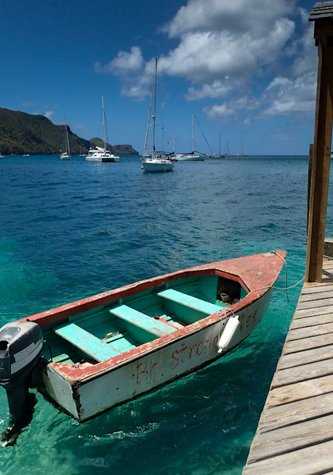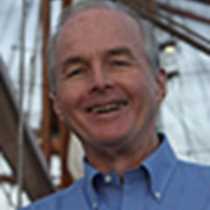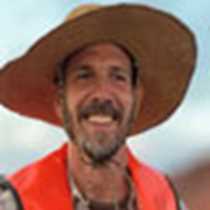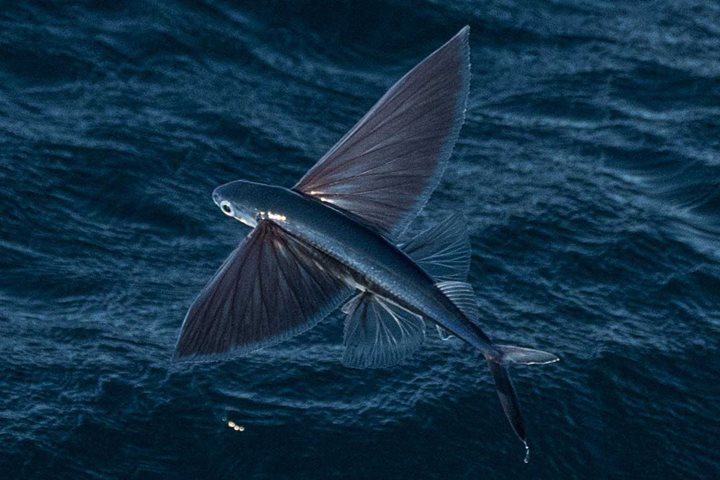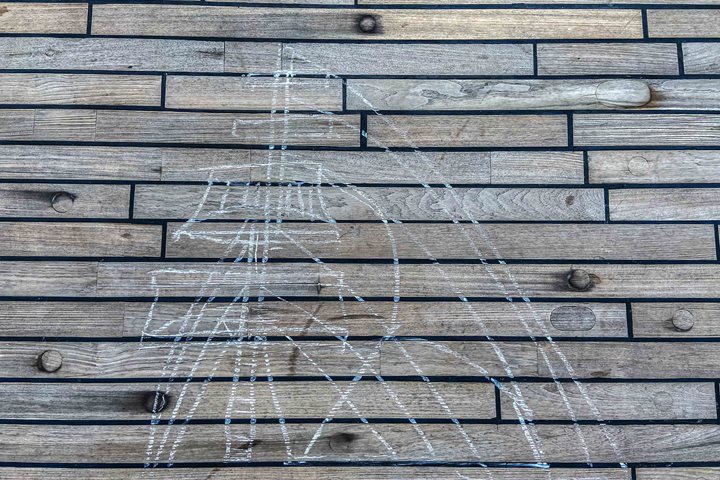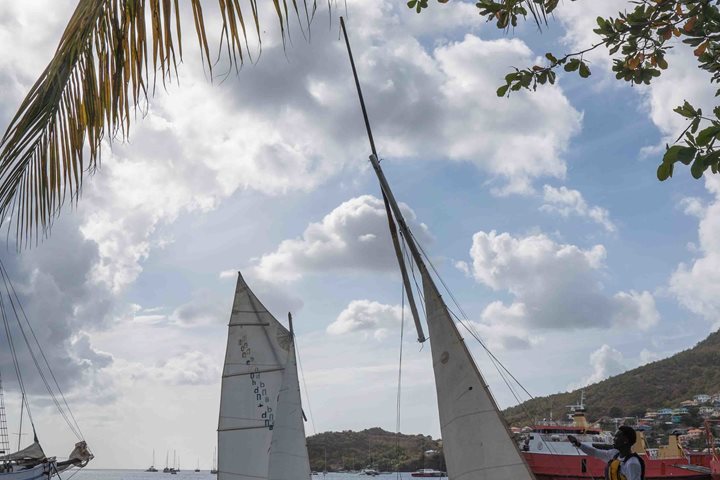We arrived in the idyllic bay of Port Elizabeth, the main city on the tiny island of Bequia at 7 a.m. The sky was overcast and as we came into Port Elizabeth, a small rainbow shimmered over the southwest part of the island. We had a few gentle showers and it almost appeared as if it would rain but the sun did come out and shone beautifully all day.
Bequia is an island only a few square miles in size but possessed of enormous cultural diversity. Indentured Scotts, who worked on the early sugar plantations, were among the first non-indigenous people here. There seems to have been a small relic population of Caribe Indians on the island as late as the late 18th. These Amer-Indians who emigrated up from the Orinoco basin centuries earlier mixed with the African population also brought to work the sugar plantations. The largest sugar plantations were located on the east side of the island, near what today is called Industry Bay. The people who resulted from this Carib/African mix were locally called “Garafuna,” or sometimes “Black Carib.” I believe the word “Garafuna” may be a dialect pronunciation of “Carib-fumé” with “fumé” suggesting the darkening of the skin when the races mixed. There was a Black Carib revolt against the English overlords in 1795 led by one of the great Carib leaders, Chief Joseph. He was caught and executed by the English in 1795. The Afro-Carib alliance early in 1795 controlled the entire island of St. Vincent for almost six months. They were finally beaten. Five-thousand Garafuna were rounded up and sent to one of the small islets just off the south east coast of Bequia, in sight of Mustique. There were forced to stay subsisting on very little until 1798 when the survivors were resettled in Honduras and Belize. More than 2,000 perished. Today their descendants make a pilgrimage to Becquia in memory of their ancestors.
We boarded our first tender and landed on the pier at 8:45 a.m. where we got into the small pickups with benches for our tour of the island. Our first stop was the scenic overlook of Fort Hamilton, which gave us a nice view of Port Elizabeth and Bequia town. There are five 18th century canons (four English and one French) placed there, which were dredged from the bottom of the bay. There does not seem to have been a battery here. The fort has a tenuous association with Alexander Hamilton, the first treasurer of the United States and a native of St. Kitts/Nevis. The people of Bequia are great boat builders and Alberto’s photo of a skiff Be Strong testifies to their genuine ability and the glorious color of the sea here. I saw some men sanding a whaling skiff this afternoon, which they said was 140 years old. The people on the island are allowed to take four whales a year. They hunt the whales in the traditional manner in open skiffs powered only by sail and with hand thrown harpoons. The nature of the hunting was considered subsistence and since it was not mechanized and practiced for centuries they have been allowed to continue it. Some years they get no whales.
Our next stop was to the turtle sanctuary of Brother Orton King, a former commercial turtle fisherman who some years ago came to the realization that the turtles, fish, and reefs, which he knew as a child, were being destroyed by overfishing and other exploitative industries. Brother King vowed to help serve the turtles and so began to raise recently hatched hawksbill and green turtles in pools. He has been at it for almost 25 years. To date he has released 935 turtles and this year he expects to see his first mature adults return to lay their eggs. Brother King told us that as a young man he fished by free diving (no scuba or snorkel gear) to a depth of 80 feet. He receives no government support for his work in trying to restore the turtles. He is a strict observer of the Sabbath and will not sell anything on Saturday. I suspect he may be a Seventh Day Adventist, which denomination has a strong presence on the island. Hence, his little shop where he sold t-shirts was closed. He places his principle above his need for money. We have always elected to visit him to support his efforts.
Back at the harbor we boarded the tender and most of us went to Jack’s Bar, a wonderfully welcoming restaurant bar right on the sea for fruit, rum punches, CCB’s, and Hairoun Beer. A goodly number of punches were drunk! Some of us also went for a swim in the crystalline indigo and turquoise water. Cocktails and Peter’s wonderful piano music were on the lido deck beginning at 6:30 p.m. Tomorrow we are off to discover and swim with the hawksbill and green turtles on Tobago Cays.

